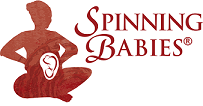A seeker gains a new perspective of living by a series of awakened actions. In the 12-step recovery culture, the twelve action steps focus on moving from the victimization of alcoholism or substance addiction, or, as in Alanon, overcoming the havoc these addictions have on the belief systems of loved-ones. Individuals are empowered in their attempts to regain sanity and less trauma and regret get passed on to the family or next generation. I thought I would explore how a creative imitation of the Twelve Steps might offer something to empower self-awareness for a pregnant parent’s decision-making process in birth planning.
I believe the Twelve Steps are based on spiritual practices that have been successful through the ages and are adapted to a path of recovery. Please understand that I don’t think that physiology is at all replaceable for the “Power Greater than Ourselves” though also not disconnected from the source in any possible way. Dependence on a “Higher Power” or “Source” is as likely as our dependence on water. There is no disempowerment here. Our bodies include water, our beings include the Source from which we arose. You get to determine your own definitions of Source in any Twelve Step program. I’m exploring an idea here that may be helpful to some readers and don’t expect everyone to come along for this ride.
In a pregnancy with a family where co-dependency or addiction may exist, I hope this playful expansion of a treasured program may be supportive. Considering the lack of support for families planning a Vaginal Birth After Cesarean (VBAC) or a Vaginal Breech Birth (VBB), these concepts can be quite valuable. Let’s trust the process of playful exploration and see if this experiment has value for some of our readers.
Twelve Steps to Empowering Birth Preparation
The 12 borrowed agreements, adapted for our interest in birth preparation might be:
1. We realized intent for a natural birth was not always enough – that birth includes a use of our physiology that isn’t well understood by current birth care practitioners/providers.
2. Came to believe that a physiology greater than our embodied experience could restore us to body balance.
3. Made a decision to become active stewards of our physical health for a greater wholeness in mind, body, and heart for the quality of our birth experiences.
4. Made a searching and fearless inventory of our bodies, attitudes, and emotions.
5. Admitted to God, to ourselves, and to another human being the exact need of our preparation for birth. Involving the omnipotent and another human in this process helps us get realistic expectations for ourselves. Admitting to ourselves can include feeling how your body feels when doing and when contemplating the preparations you are thinking about, does it feel right to you? Are you using too much or too little vigor?
6. Were entirely active in the activities to increase body balancing as we had resources for, and expanded our choices as we gained perspective.
7. Humbly released our attachment to our limitations and opened to a greater possibility.
8. Made a list of habits holding us back, and became curious to habits that move us towards health and a healthy childbirth.
9. Had compassion for our resistance to change, especially when to continue bad habits would injure us, our babies, or others.
10. Continued to take personal inventory and when we could grow or improve, celebrated it and began activating a new way of being with ourselves. We celebrate the pleasure in our body and our pregnancies.
11. Sought through reading and contact with those proficient in birth preparation to improve our conscious power to prepare for birth and parenting in practical and emotional ways.
12. Having had a physiological birth as the result of these steps, we tried to carry this message to other pregnant people and to practice physiology in our health and parenting before intervening upon our bodies or birth processes.
We understand that even using this approach, not everyone will have a physiological or natural birth. Birth variables include the unknown, as well as the issues of the particular day. We hope that increasing awareness and curiosity to your ability to connect to your birth journey will help you move from an assumption of natural birth to an active participation with your life experiences.
The original AA Steps:
1. We admitted we were powerless over alcohol – that our lives had become unmanageable.
2. Came to believe that a Power greater than ourselves could restore us to sanity.
3. Made a decision to turn our will and our lives over to the care of God as we understood God.
4. Made a searching and fearless moral inventory of ourselves.
5. Admitted to God, to ourselves and to another human being the exact nature of our wrongs.
6. Were entirely ready to have God remove all these defects of character.
7. Humbly asked God to remove our shortcomings.
8. Made a list of all persons we had harmed, and became willing to make amends to them all.
9. Made direct amends to such people wherever possible, except when to do so would injure them or others.
10. Continued to take personal inventory and when we were wrong promptly admitted it.
11. Sought through prayer and meditation to improve our conscious contact with God as we understood God, praying only for knowledge of God’s will for us and the power to carry that out.
12. Having had a spiritual awakening as the result of these steps, we tried to carry this message to alcoholics and to practice these principles in all our affairs.
Helpful Links:
- Find a Spinning Babies® Certified Parent Educator
- Find a Spinning Babies® Aware Practitioner
- Your Pregnancy Week-by-Week with Spinning Babies®
- Products for Parents
- Free Reading For Parents
References:
“A.A. Around the World.” Alcoholics Anonymous : A.A. Around the World, www.aa.org/pages/en_US/aa-around-the-world.
Adams, Ellise D., et al. “A Nurse’s Guide to Supporting Physiologic Birth.” Nursing for Women’s Health, Elsevier, 12 Feb. 2016, www.sciencedirect.com/science/article/abs/pii/S1751485115000112.
“International Cesarean Awareness Network.” International Cesarean Awareness Network, www.ican-online.org/.
K., Debra. “Expecting? The Process Of Creating A Physiological Birth.” HuffPost, HuffPost, 14 Apr. 2015, www.huffpost.com/entry/expecting-the-process-of-_b_6674974.
“Normal Physiologic Birth.” Midwives Alliance of North America, 27 Dec. 2016, mana.org/about-midwives/normal-physiologic-birth.
Olza, Ibone, et al. “Women’s Psychological Experiences of Physiological Childbirth: a Meta-Synthesis.” BMJ Open, British Medical Journal Publishing Group, 1 Oct. 2018, bmjopen.bmj.com/content/8/10/e020347.
“Supporting Healthy and Normal Physiologic Childbirth: A Consensus Statement by ACNM, MANA, and NACPM.” The Journal of Perinatal Education, Springer Publishing Company, 2013, www.ncbi.nlm.nih.gov/pmc/articles/PMC3647729/.
“VBAC (Vaginal Birth After Cesarean).” www.childbirthconnection.org/giving-birth/vbac/.
“VBAC.com.” A Woman-Centered, Evidence-Based, Resource, www.vbac.com/.

